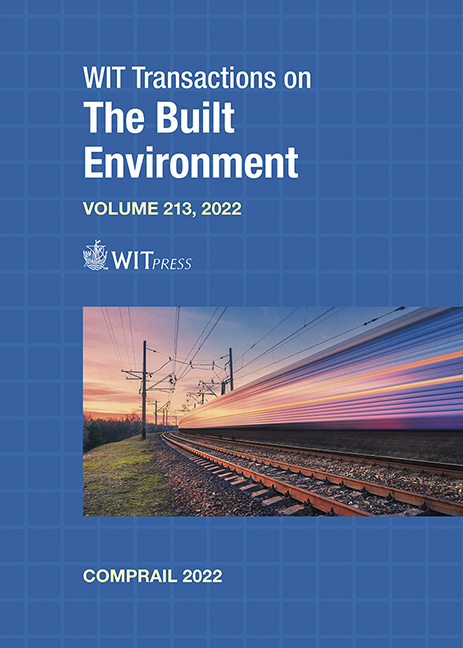STUDY ON THE INFLUENCE OF THE MODELLING STRATEGY IN THE CALCULATION OF THE WORN PROFILE OF RAILWAY WHEELS
Price
Free (open access)
Transaction
Volume
213
Pages
12
Page Range
65 - 76
Published
2022
Paper DOI
10.2495/CR220061
Copyright
Author(s)
NICOLA BOSSO, MATTEO MAGELLI, NICOLÒ ZAMPIERI
Abstract
As changes in the wheel and rail profiles strongly affect vehicle dynamics, running stability and safety, maintenance operations such as wheel turning and rail grinding are necessary. The availability of numerical models for wear prediction can be a huge support to optimize the scheduling of such operations. Thanks to the computational power of modern computer architectures, allowing parallelization and co-simulation, the typical strategy is based on a dynamic module performing the vehicle dynamics simulation, usually developed in commercial multibody (MB) software packages, and on a wear module for the calculation of the worn material. The latter can be implemented in the same MB code or in a separate software, such as Matlab/Simulink, which exchanges data with the MB code. Wear modules rely on wear laws relating the amount of worn material to the normal load and sliding distance or to the energy dissipated at the contact interface. Both types of law can be applied locally, calculating the worn depth in each cell of the discretized contact patch from the contact pressures and sliding speeds, or globally, hence calculating the worn volume or mass starting from the global forces and creepages. In the latter case, the worn material is calculated on the whole contact patch rather than only on the slip zone, and a proper distribution is required to relate the worn depth to the worn volume. The present work aims to further investigate the differences between the two approaches in the computed worn profiles in a specific case study in terms of reference vehicle and track, carrying out the dynamic simulations through the Simpack MB code. The paper is intended to highlight the differences in both the numerical results and computational efforts, comparing the wear computed by a local model with the outputs of the Simpack wear module.
Keywords
wheel wear, worn profiles, wheel–rail tribology, wheel–rail contact, Archard wear law, dynamic simulation, multibody simulation





